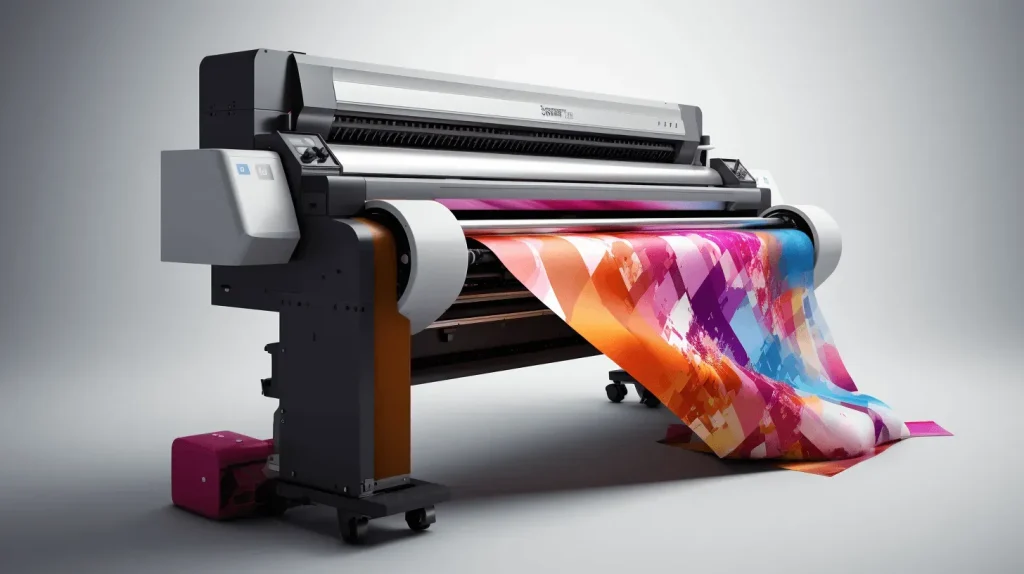DTF printing, or Direct-to-Film printing, has revolutionized the world of apparel personalization by offering an innovative approach to design and production. This cutting-edge technique enables vibrant, high-quality prints that adhere exceptionally well to a variety of fabrics, making it an ideal choice for both professional printers and DIY enthusiasts alike. One major advantage of DTF printing is the versatility it provides, allowing for the use of specialized DTF printing techniques and a wide selection of DTF film options that cater to different printer types. However, achieving optimal DTF printing results requires a keen understanding of DTF heat press settings and diligent attention to common DTF printing problems and solutions. As the industry continues to evolve, mastering these aspects of DTF printing can ensure superior quality and durability in your apparel creations.
The process of Direct-to-Film printing is increasingly recognized for its effectiveness in producing detailed and long-lasting designs on fabric. Often referred to as DTF transfer printing, this method employs specific films and inks that work in tandem to deliver vibrant colors and intricate patterns. Understanding the intricacies of this technique, from selecting the right DTF media to perfecting heat application, is crucial for anyone looking to venture into garment decoration. This innovative approach not only streamlines production but also opens up new possibilities for customization and personalization in the fashion industry. With the right knowledge and tools, you can navigate the challenges of DTF transfer methods and achieve unparalleled results.
Understanding DTF Printing Techniques
DTF printing is celebrated for its ability to produce high-quality images that are both vibrant and long-lasting. The core of achieving stunning results lies in mastering various DTF printing techniques. These techniques encompass everything from initial artwork preparation to the final heat pressing of designs onto fabric. Practicing these methods ensures that printers can effectively apply colors and details that stand out, allowing for a quality finish that rivals traditional screen printing methods. Individual techniques can include modifying ink densities, adjusting print speeds, and calibrating color profiles to get the perfect output.
Moreover, understanding the nuances of DTF printing techniques can help troubleshoot common issues faced during the printing process. As an example, using precise ink limits can prevent ink from bleeding or smudging, ensuring clean and sharp designs. Knowing when and how to adjust these settings allows for a greater degree of creativity and flexibility in design work, leading to better overall customer satisfaction.
DTF Film Selection for Quality Results
Choosing the right DTF film is crucial not only for the aesthetic quality of the prints but also for their durability in wear and wash scenarios. Different films have varying compatibility with inks and can affect how well the designs adhere to fabrics. Films such as PET (Polyethylene Terephthalate) are popular due to their excellent properties, providing optimum clarity and strength. When selecting DTF film, it is essential to consider factors such as ink type, fabric composition, and intended use of the final product to ensure compatibility and performance.
Additionally, a thorough understanding of DTF film characteristics can help in troubleshooting issues when they arise. If prints are pixelated or appear washed out, it could be due to inadequate film selection. Choosing a film that best combines the right surface texture and thickness can significantly enhance both print quality and durability. Pre-treating films with an adhesive layer can also optimize ink adhesion, leading to vibrant outputs that withstand everyday use.
Optimizing DTF Heat Press Settings
Heat press settings play a pivotal role in the outcome of DTF printed designs. It is essential to comprehend the ideal temperature and pressure settings during the application process. Most DTF prints require heat press temperatures ranging from 270°F to 310°F (132°C to 154°C), depending on the specifics of the film and ink used. Utilizing the wrong temperature or insufficient pressing time can lead to insufficient adhesion or damage to the design, ultimately compromising the quality of the print.
Furthermore, achieving the right combination of pressure is equally significant. Too much pressure can distort designs, while too little can lead to peeling or fading after washing. Keeping a close eye on the proper cooling times is often overlooked but necessary to ensure that the transfer bonds correctly to the fabric. Understanding these heat press settings enables printers to have control over their processes, thus enhancing the reliability of their final products.
Troubleshooting Common DTF Printing Problems
The world of DTF printing is not without its set of challenges. Common problems such as misalignment, ink bleeding, or adherence failures can hinder quality. A significant aspect of troubleshooting involves understanding the stages where these issues can occur. An in-depth look into typical problems can include everything from ensuring sufficient drying time between printing and heat pressing to adjusting ink settings that match the film being utilized.
To effectively address these challenges, awareness of the variables at play is necessary. Consistent maintenance of the printing equipment helps ensure that ink flows correctly and that all machinery operates at peak efficiency. Noting temperature fluctuations and pressure inconsistencies during the printing and pressing processes can offer insight into recurrent issues. With a focus on problem-solving during the production cycle, printers can minimize errors and maximize the quality of their prints.
Achieving Optimal DTF Printing Results
Achieving optimal results in DTF printing is a multifaceted process that encompasses material selection, technique mastering, and the integration of best practices throughout the printing process. By investing in high-quality inks, selecting the appropriate DTF films, and maintaining equipment, printers can achieve vibrant and durable prints that appeal to their target market. The culmination of these efforts results in products that are not only visually appealing but stand the test of time.
Moreover, continuous learning and adaptation is key to remaining competitive in the market. Engaging in communities, attending workshops, and researching new technologies regularly can provide invaluable insights into achieving optimal DTF printing results. By staying informed about the latest advancements and trends in DTF printing, both novices and pros alike can refine their processes to deliver outstanding printed garments.
Post-Pressing Care for DTF Prints
Post-pressing care is essential to extend the lifespan and appearance of DTF printed materials. After the heat pressing process, an additional session with a protective cover can help seal the design and protect it from wear and tear. The application of heat during this stage helps to strengthen the bond between the ink and the fabric, resulting in a more durable product that can withstand washes without fading or peeling.
It is also beneficial to consider the care and maintenance of DTF printed items after production. Providing customers with washing instructions specific to DTF prints helps to uphold the vibrant qualities of their designs over time. Advising against harsh detergents and recommending cold wash settings can ensure that the printed designs maintain their integrity, leading to customer satisfaction and repeated business.
Frequently Asked Questions
What are the best DTF printing techniques for beginners?
For beginners in DTF printing, starting with the proper selection of high-quality printers and inks is paramount. Familiarize yourself with essential DTF printing techniques, such as optimizing print settings for your specific materials, pre-treating DTF films for better adhesion, and practicing accurate heat press settings to avoid common problems. Learning the requirement for drying time and pressure settings will also help achieve optimal DTF printing results.
How do I choose the right DTF film for my printer?
Selecting the right DTF film is critical for successful printing. Look for DTF films that are compatible with your specific printer and ink type, as this will enhance print vibrancy and durability. Consider the film’s texture and coating as well, and don’t hesitate to experiment with pre-treated films for improved ink adhesion and overall quality in your DTF printing projects.
What are the optimal DTF heat press settings for best results?
The optimal DTF heat press settings typically range between 265°F to 320°F (130°C to 160°C), with recommended pressure settings to suit the fabric type. Ensure to check your specific film and ink requirements, and remember to allow the prints to cool adequately before peeling the carrier film to avoid smudging or lifting. Mastering these heat press settings is crucial to achieving high-quality DTF printing results.
What common DTF printing problems should I be aware of?
Common DTF printing problems include ink smudging, poor adhesion, and color misalignment. These issues often arise from inadequate drying times, incorrect heat press settings, or uncalibrated equipment. To prevent these problems, regularly maintain your heat press, choose quality materials, and follow precise printing techniques to ensure consistent and optimal DTF printing results.
How can I achieve optimal DTF printing results in my projects?
To achieve optimal DTF printing results, focus on quality materials, including high-grade printers, inks, and films. Mastering heat press techniques is also essential; ensure proper temperature, pressure, and drying times are adhered to. Additionally, prepare your artwork accurately and maintain a stable printing environment to greatly improve the vibrancy and longevity of your DTF-printed designs.
What post-pressing care is necessary for DTF printed items?
Post-pressing care is crucial for enhancing the durability of DTF printed items. After your initial heat press session, consider a second pressing with a protective sheet to increase print longevity and quality. Additionally, store and wash the garments according to recommended guidelines to keep your DTF prints looking sharp and vibrant over time.
| Key Point | Details |
|---|---|
| Importance of Quality Materials | Invest in high-quality printers and inks specifically designed for DTF processes to ensure vibrant and durable prints. |
| DTF Film Selection | Choose compatible films for ink to enhance vibrancy and durability. Consider pre-treatment to improve adhesion. |
| Mastering Heat Press Techniques | Proper heat press settings (265°F – 320°F) and pressure can prevent common issues such as ink smudging and misalignment. |
| Post-Pressing Care | A second heat press can improve durability and final look, making prints robust against wear and washing. |
| Environmental Considerations | Maintain consistent humidity and temperature for stable and high-quality prints. |
Summary
DTF Printing is revolutionizing the apparel industry with its remarkable quality and durability. This innovative printing method not only offers vibrant colors but also withstands frequent washing and wearing, making it a favorite among professional printers and DIY enthusiasts alike. By focusing on high-quality materials, mastering printing and heat-pressing techniques, and maintaining an optimal workspace environment, you can elevate the quality of your DTF prints. Understanding these elements will lead to improved results, ultimately enhancing customer satisfaction and fostering repeat business in the competitive garment industry.



